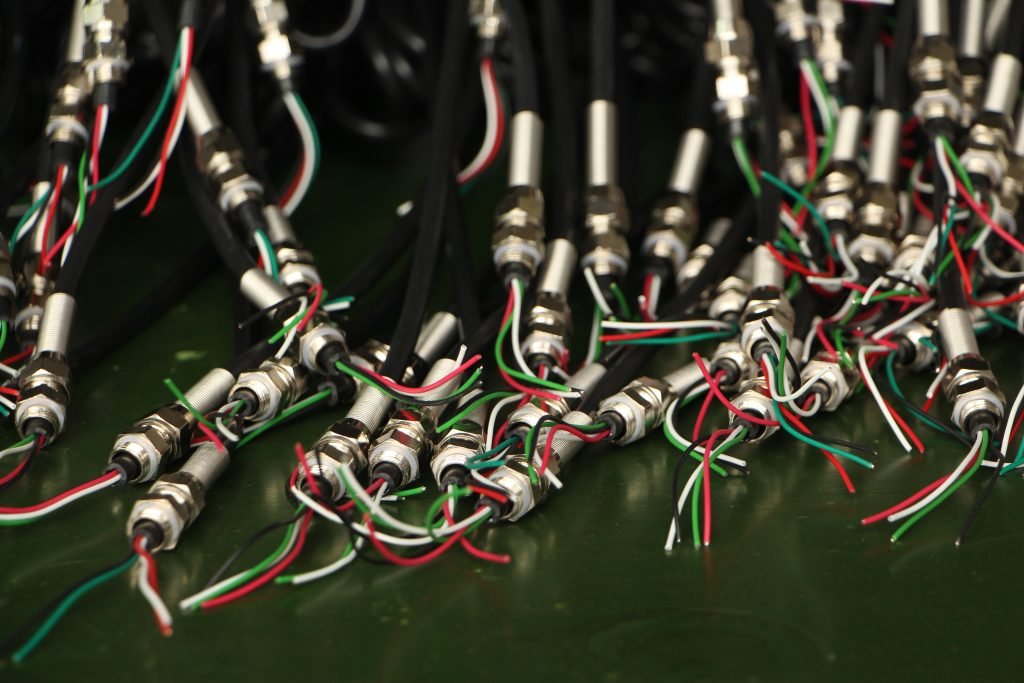сензор кабел
Сензорен кабел е вид кабел, който се използва за свързване на сензори и задействащи механизми. Сензорните кабели често се използват в индустриални приложения, като производство и селско стопанство. Сензорните кабели се правят от различни материали, включително мед и фибростъкло. Те често са гъвкави и тънки, което ги прави лесни за инсталиране и използване.
Съдържание:
- Технически спецификации: Какви са различните видове сензори, използвани с кабели?
- Приложения: Как могат да се използват кабели в различни индустрии?
- Бъдещи перспективи: Какви са потенциалните ползи от използването на кабели в електрониката?
- Свойства на сензорните кабели: Електрически, Механични, оптична

1.Технически спецификации: Какви са различните видове сензори, използвани с кабели?
Кабелите се предлагат в много различни форми и размери, Но всички те имат едно общо нещо- Те се използват за прехвърляне на информация между устройства. Някои от най -често срещаните видове сензори, използвани с сензори за аретемпература на кабели, сензори за налягане, и сензори за влага.
Температурните сензори се използват за откриване на температурата на нещо. Те работят, като откриват разликата в температурата между две точки и след това изпращат тази информация безжично обратно към устройството, което ги използва. Сензорите за налягане работят малко по -различно. Те обикновено се използват за откриване, когато нещо се компресира или разширява. Този тип сензор изпраща електрически ток през проводник, когато открие налягане и след това изпраща този ток обратно на устройството, така че да може да бъде преобразуван в цифров сигнал. Сензорите за влага използват подобна технология за сензори за налягане, Но вместо да измерват налягането, те измерват нивата на водните пари.
2.Приложения: Как могат да се използват кабели в различни индустрии?
Кабелите отдавна се използват в различни индустрии, От телекомуникации до енергия. Сензорните кабели са особено универсални, тъй като те могат да се използват в широк спектър от приложения. Ето пет примера:
- Кабелите могат да се използват за предаване на данни между устройства. Термодвойки, например, често се използват за наблюдение на температурите и други условия вътре в обекти или системи. Чрез използване на сензорни кабели, Тези измервания могат да бъдат предавани бързо и точно на дълги разстояния.
- Кабелите могат да се използват за захранване на устройства дистанционно. Например, Кабел може да бъде свързан към батерия, така че да може да се работи обект, без да е директно свързан към електрически изход. Това е особено полезно на опасни или труднодостъпни места.
- Кабелите могат да се използват като антени за комуникационно оборудване.
3.Бъдещи перспективи: Какви са потенциалните ползи от използването на кабели в електрониката?
Кабелите отдавна се разглеждат като необходимо зло в света на електрониката. Те често са тромави, скъпо и бавно. Но какво ще стане, ако кабелите могат да бъдат заменени от сензори? Сензорите могат да бъдат вградени в кабели за събиране на данни за околната среда около тях. След това тази информация може да се използва за подобряване на работата на електронните устройства или за наблюдение на жизненоважните системи. Потенциалните ползи от използването на кабели в електрониката са огромни, И технологията все още е в ранните си етапи. Но ако електрониката, базирана на кабели, може да революционизира начина, по който използваме компютри и други устройства, Те наистина ще окажат влияние върху живота ни.
4.Свойства на сензорните кабели: Електрически, Механични, оптична
Сензорните кабели са жизненоважен компонент на съвременните системи за измерване и управление. Те позволяват на устройствата да общуват помежду си и с външния свят, И те играят важна роля в различни индустриални приложения. Сензорните кабели обикновено се състоят от три различни компонента: електрически проводник, Метална обвивка, и оптично влакно.
Електрическият проводник е основният компонент на сензорния кабел. Обикновено се прави от метални проводници, които са усукани заедно, за да образуват кабел. Металната обвивка е от съществено значение за защита на телените проводници от външни фактори като влага и прах. Освен това помага да се запази кабелът гъвкав и му позволява да се движи гладко по повърхностите. Оптичното влакно е крайният компонент на сензорния кабел, И той е отговорен за предаването на информация между устройства.
В заключение,a сензорен кабел е кабел, който се използва за прехвърляне на данни между устройства. Този тип кабел е необходим, когато устройствата не са свързани към изход или когато изходът не работи правилно.
